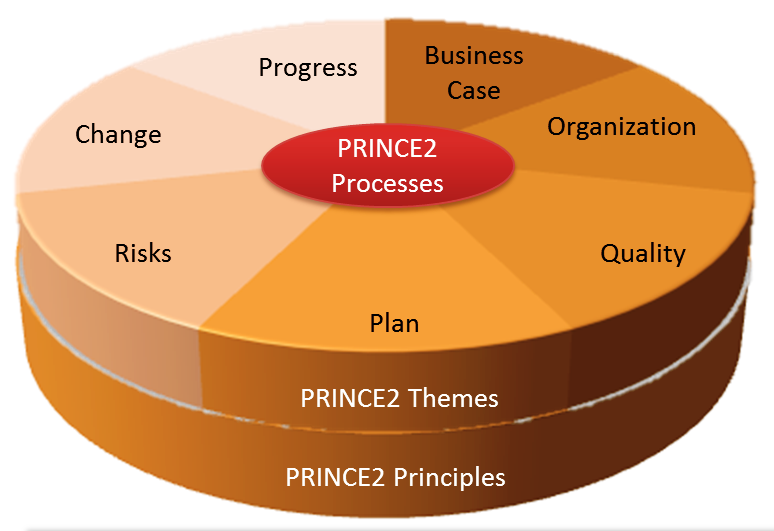
Being able to capture your ideas and thoughts quickly and effectively for both you and perhaps your team to be able to understand is a fantastic skill to have. Capturing the free exchange of ideas as they pop into your mind or discussed by your team can unlock new solutions and insights into issues or problems that may need solving. Offering an effective problem-solving strategy that can be used for almost anything, from daily tasks and projects to strategic planning.
Traditionally when you brainstorm, you’re creating an environment where everyone can share their ideas without fear of being judged. This opens the door for truly creative thinking. By having a diverse group of people, you get to hear many different viewpoints, which leads to better and more complete ideas. It’s not just about coming up with a lot of ideas, but also about coming up with really good ones that could be the perfect solution or plan for your business.
OpenAI’s large language model ChatGPT and other AI chatbot style AI services such as Google Bard, Perplexity AI, Claude and more can serve as a fantastic brainstorming assistant, offering a range of services from generating a list of ideas to guiding you through structured brainstorming techniques like TRIZ or Six Thinking Hats. By asking the chatbot questions it can help you critically evaluate ideas, extend or improve upon them, and even simulate different viewpoints to give you a broader understanding of an issue. Whether you’re brainstorming alone or as part of a team, simply prompt ChatGPT with your specific needs, such as “Help me brainstorm ways to improve customer satisfaction,” to kickstart the creative process.
Classic brainstorming techniques
Here are a few classic brainstorming techniques that might be useful to get you started if you are new to brainstorming your ideas.
- Mind Mapping: This involves visually organizing thoughts around a central concept. Lines are drawn to connect related ideas, encouraging a holistic view of the problem.
- Affinity Diagramming: Participants individually jot down ideas on sticky notes, which are then categorized and arranged on a wall to identify common themes.
- SWOT Analysis: Examines the Strengths, Weaknesses, Opportunities, and Threats relevant to a particular problem or decision, helping to generate targeted ideas.
- Round-Robin Brainstorming: Participants take turns sharing ideas in a structured format. This can mitigate louder voices dominating the session.
- Nominal Group Technique: Similar to Round-Robin but includes a voting process. Participants rank ideas anonymously, and the most popular ones are then discussed further.
- Reverse Brainstorming: Also known as negative brainstorming, this technique involves thinking of ways to create the problem, thereby making it easier to understand how to solve it.
- 6-3-5 Brainwriting: In this method, each of six participants writes down three ideas on a sheet of paper within 5 minutes. The paper is then passed to the next person who uses the existing ideas to generate new ones.
- SCAMPER: An acronym for Substitute, Combine, Adapt, Modify, Put to another use, Eliminate, Reverse. Each of these actions can be applied to an existing solution or situation to spark new ideas.
Advanced brainstorming techniques and prompts
Watch the interesting video below created by the Nerdy Novelist who looks at how brainstorming ChatGPT prompts can be used to improve your writing.
Other articles we have written that you may find of interest on the subject of improving productivity using ChatGPT
1. TRIZ (Theory of Inventive Problem Solving)
Developed by Genrich Altshuller, TRIZ is a systematic approach to solving engineering and technical problems. It’s based on the study of patterns in patents and other innovative solutions. TRIZ offers tools like the “40 Inventive Principles” and the “Contradiction Matrix” to solve problems by eliminating contradictions. For example, if you’re trying to make a material both strong and lightweight, TRIZ could offer solutions by pointing to similar problems solved in other fields.
Example ChatGPT prompt : “Can you help me apply TRIZ principles to improve the efficiency of solar panels?”
2. Six Thinking Hats
Created by Edward de Bono, this method aims to make group discussions more focused and productive by assigning different “hats” or roles to participants:
- White Hat: Focuses on objective facts and data.
- Yellow Hat: Emphasizes optimism and the benefits of a concept.
- Black Hat: Examines the risks and drawbacks.
- Red Hat: Deals with emotions and intuition.
- Green Hat: Encourages creativity and alternative solutions.
- Blue Hat: Manages the thinking process and summarizes conclusions. Each hat represents a different thinking style, and participants switch hats to explore the problem from various angles.
Example ChatGPT prompt : “Let’s use the Six Thinking Hats method to discuss how to increase user engagement on our platform. Start with the White Hat.”
3. Disney Method
This method is inspired by Walt Disney’s creative process and divides thinking into three stages:
- Dreamer: At this stage, all ideas are welcomed without any criticism. The focus is on generating as many ideas as possible.
- Realist: Here, ideas are vetted for practicality. What would it take to implement them?
- Critic: At this point, potential issues with the ideas are considered. This stage is not about killing ideas but refining them. By clearly separating these stages, participants can freely generate ideas without immediately getting bogged down by constraints.
Example ChatGPT prompt : “Could we go through the Disney Method to generate ideas for a sustainable urban transport system? Start with the Dreamer phase.”
4. Lotus Blossom Technique
This technique begins with a central idea or problem, which is placed in the center of a diagram. Around this central idea, eight related themes or components are noted. Each of these then becomes the center of its “lotus blossom,” around which another layer of related ideas or themes is added. This fractal-like exploration helps to dive deep into every aspect of the problem, exposing underlying issues and hidden opportunities.
Example ChatGPT prompt : “Can you assist me in using the Lotus Blossom Technique to brainstorm ways to reduce plastic waste?”
5. S.C.A.M.P.E.R. Lateral Thinking
This is an extension of the basic SCAMPER method, incorporating lateral thinking techniques. While SCAMPER focuses on modifications to existing ideas (Substitute, Combine, Adapt, Modify, Put to another use, Eliminate, Reverse), the lateral thinking extension encourages breaking out of established patterns. For instance, it might involve flipping an idea on its head or combining it with an unrelated concept to spark innovation.
These advanced techniques are valuable because they offer structured frameworks for thinking, which can be particularly useful when tackling complex or multi-faceted problems. They often require a facilitator experienced in the method to guide the process effectively.
Example ChatGPT prompt : “Let’s employ S.C.A.M.P.E.R. Lateral Thinking to innovate new features for a smartphone. Begin with the Substitute aspect.”
6. Charrette Procedure
Originally used in architecture and urban planning, a charrette is an intensive workshop that brings together stakeholders, experts, and community members to collaboratively design solutions to complex problems within a fixed time frame. This method fosters immediate feedback, iteration, and consensus-building. Charrettes often have multiple phases and can last from a few hours to several days, depending on the complexity of the problem.
Example ChatGPT prompt : “How would a charrette procedure look like if we were to design a community park? Let’s start brainstorming the first phase.”
7. Attribute Listing
This technique involves dissecting the problem or object of interest into its fundamental attributes or features. For example, if the challenge is to design a more efficient electric car, the attributes could include battery life, aerodynamics, weight, and so on. Once the attributes are listed, each is brainstormed separately for possible improvements or innovations. The most promising ideas from each attribute can later be combined or synthesized into comprehensive solutions.
Example ChatGPT prompt : “Help me apply Attribute Listing to brainstorm improvements for electric vehicle charging stations.”
8. Morphological Analysis
Created by Fritz Zwicky, this method is particularly useful for complex, multi-variable problems. A matrix is created with each variable (or attribute) of the problem represented along the axes. Then, for each variable, all possible values or states it could have are listed. By systematically exploring combinations of these variables, you can identify novel solutions that might not be apparent through traditional brainstorming. This method is often facilitated by software to handle the large number of possible combinations.
Example ChatGPT prompt : “Can we do a Morphological Analysis for developing a more efficient water purification system?”
9. Fishbone Diagram (Ishikawa)
Though primarily a root-cause analysis tool, the Fishbone Diagram can be adapted for brainstorming as well. It starts with the problem statement written at the “head” of the fish, and the “bones” are used to categorize potential causes or components of the problem. Team members then brainstorm under each category, facilitating a structured, in-depth discussion. This is particularly useful for identifying underlying issues that might not be immediately obvious.
Example ChatGPT prompt : “Let’s create a Fishbone Diagram to identify the root causes of employee turnover in our organization.”
10. Synectics
Developed by George M. Prince and William J.J. Gordon, Synectics aims to promote creative thinking by drawing analogies and relationships between seemingly unrelated fields or concepts. The process often involves defining the problem, exploring diverse analogies (personal, direct, symbolic, etc.), and using those analogies to generate new ideas or solutions. For example, one might use biological systems as an analogy for improving organizational efficiency. By comparing the circulatory system to a supply chain, innovative solutions might emerge.
Example ChatGPT prompt : “I’d like to use Synectics to generate innovative solutions for air pollution. Can you help me draw some analogies?”
11. Blue Ocean Strategy
This strategy focuses on generating untapped market spaces or “Blue Oceans,” rather than competing in “Red Oceans,” where markets are saturated and competitive. The key tool here is the “Strategy Canvas,” which visually plots the factors that an industry competes on and invests in. By shifting the focus from existing competitors to alternatives and from customers to non-customers, teams can identify new value propositions and market spaces.
Example ChatGPT prompt : “How can we apply Blue Ocean Strategy to identify new market spaces in the online education sector?”
12. Future Backwards
In this technique, participants first envision a future state where the problem has either been solved successfully or has escalated into a worst-case scenario. Starting from this endpoint, they work backward to identify the series of events and decisions that led to that future. This technique helps to break out of current mental models and assumptions by forcing a long-term view, enabling more innovative approaches to emerge.
Example ChatGPT prompt : “Let’s use the Future Backwards technique to envision how renewable energy could completely replace fossil fuels. Start with the ideal future.”
13. Critical Assumptions Testing
This method involves identifying the fundamental assumptions that underlie the current understanding of the problem or business model. Once these assumptions are laid out, each is critically tested to see if it holds true or if it can be overturned. This technique often uncovers new angles to approach the problem and can lead to disruptive innovations.
Example ChatGPT prompt : “Can we use Critical Assumptions Testing to challenge the existing assumptions in the fast-food industry?”
14. Four-Step Innovation Process
This process is more of a framework that can incorporate various brainstorming techniques at each stage. The four steps are:
- Identify the Correct Problem: Use methods like the 5 Whys or Fishbone Diagram to ensure you’re solving the right problem.
- Idea Generation: This is where classic or advanced brainstorming techniques can be employed.
- Develop a Prototype: Take the most promising ideas and develop low-fidelity prototypes.
- Implement the Solution: Finally, the most viable solutions are developed and implemented. This structured approach ensures that ideas are not only generated but also evaluated and executed, making it a comprehensive innovation process.
Example ChatGPT prompt : “Let’s go through a Four-Step Innovation Process to develop a new approach for waste management. Start with identifying the correct problem.”
15. Cross-Functional Brainstorming
This approach assembles a diverse group of people from various departments or specialties to tackle a problem. For example, marketing professionals, engineers, and customer service representatives might all be included in brainstorming a new product feature. The mix of different perspectives and expertise often yields more rounded and innovative solutions. This technique can be combined with other methods to enrich the brainstorming process further.
Example ChatGPT prompt : “How would you facilitate Cross-Functional Brainstorming for enhancing our customer support experience? Include perspectives from marketing, engineering, and customer service.”
Whatever brainstorming technique you choose, ChatGPT can provide the perfect assistant to help you explore new ideas and more. Its capabilities extend from generating a quick list of ideas to offering structured guidance through complex brainstorming methods. Whether you’re looking to critically evaluate options, flesh out existing concepts, or introduce new perspectives into the conversation, ChatGPT serves as a convenient and effective tool to elevate your brainstorming sessions. This makes it an invaluable resource for both individuals and teams aiming to foster creativity and find innovative solutions.
Filed Under: Guides, Top News
Latest timeswonderful Deals
Disclosure: Some of our articles include affiliate links. If you buy something through one of these links, timeswonderful may earn an affiliate commission. Learn about our Disclosure Policy.


